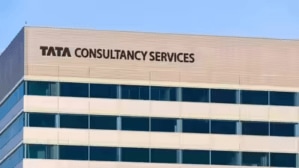By Shailesh Dhuri
Rooted in the ancient Indian philosophy of Vasudhaiva Kutumbakam (“The world is one family”), the growing interconnectedness of today’s world demands a global perspective on development and inclusiveness. Distributed ledger technology (DLT) has emerged as a powerful tool to realize this vision of shared prosperity and progress for all.
According to the World Bank, 1.7 billion individuals globally are locked out of the fundamental pillar of prosperity: FINANCE. Exclusion from banks and essential financial services traps people in poverty, fuels inequality, and stifles economic growth. This is where DLT could play a major role in lifting individuals out of poverty and guiding them toward prosperity and growth. DLT can transform government schemes, such as Direct Fund Transfers, by overcoming beneficiary identification and data sharing challenges.
Blockchain Redefining Financial Landscape
Financial inclusion rests upon four pivotal pillars: Access – focus on using financial products considering cost and distance, Quality – assessing appropriateness and client awareness, Trust – reliability of digital services, and Usage – examining customer engagement.
The rapid adoption of technology has promoted financial inclusion, notably in India with initiatives such as Aadhaar Card linking to Jan Dhan accounts for the rural and unbanked population. This integration facilitates the government’s Direct Benefit Transfer (DBT) schemes, ensuring monetary compensation delivery to the intended recipients.
But does our current technology guarantee the efficient execution of DBT schemes? Is the core principle of ‘eligibility’ truly driving the success of the program?
Diving deep into the matter, it is evident that DLT will serve as a crucial tool in the implementation of government schemes, improving their efficiency. Its role is to guarantee the appropriate utilization of government subsidies and benefits. The underlying principle focuses on outcomes rather than mere eligibility. Let us explore a few use cases:
Education loans to the underprivileged: Upon receiving a loan and commencing their education, a student’s performance metrics, including attendance and test scores, are recorded on the blockchain. Conditions encoded in the DLT govern this process, linking performance to a variable interest rate. Improved academic performance leads to lower interest rates, fostering productivity and ensuring proper use of public schemes.
Farmer subsidy: When a farmer receives fertilizer subsidies, the aim is to boost crop yield. However, there is a risk of misuse if the farmer is not actively farming and utilizing subsidy as per linked land. Using DLT and real-time drone imagery of the farmer’s land, authorities can verify crop cultivation coverage. This ensures that subsidies align with outcomes, promoting efficient allocation of government funds.
In addition to India, other Public Distributed System (PDS) such as Brazil’s Bolsa Família program, or Kenya’s Uwezo Fund can enhance productivity and effectiveness via DLT. DLT is poised to fuel economic growth. It transcends mere technological innovation, emerging as a transformative force for empowering communities and individuals economically.
Challenges and Collaborative Solutions for a Changing Landscape
Navigating Obstacles: DLT, with its immense potential, grapples with various challenges on its journey forward. Scalability emerges as a primary concern, as the technology contends with efficiently managing substantial transaction volumes. Regulatory ambiguity adds another layer of complexity, potentially deterring widespread adoption due to a lack of clear frameworks. Furthermore, the formidable task of constructing the required technical infrastructure presents financial and temporal obstacles, underscoring the uphill battle blockchain faces in overcoming these hurdles.
Paving the Path to Success: Triumphing over these challenges demands a collaborative approach from key stakeholders. Governments must play a pivotal role by formulating transparent regulations that encourage innovation while managing associated risks. Financial institutions are urged to invest in blockchain infrastructure and initiate pilot projects to test the waters. Simultaneously, technology companies are tasked with refining and simplifying user-friendly blockchain solutions. Development organizations bear the responsibility of fostering awareness, extending technical assistance, and bridging the digital gap, ensuring a united front in the pursuit of blockchain’s transformative potential.
Future Forward: The Promising Trajectory of Blockchain
Imagine a transparent, tamper-proof ledger shared by all, streamlining processes, and eliminating the need for costly middlemen. In finance, expect cross-border payments in seconds, not days, and say goodbye to paperwork mountains. Supply chains will transform, with every product’s journey tracked from raw material to shelf, boosting efficiency and fighting counterfeits. Healthcare will get a shot of trust, with secure medical records accessible only to authorized parties. Even voting could become unhackable, restoring faith in democracy. The tide of blockchain innovation is rising. It’s time to shed our reservations and ride the wave.
The author is CEO, Decimal Point Analytics









